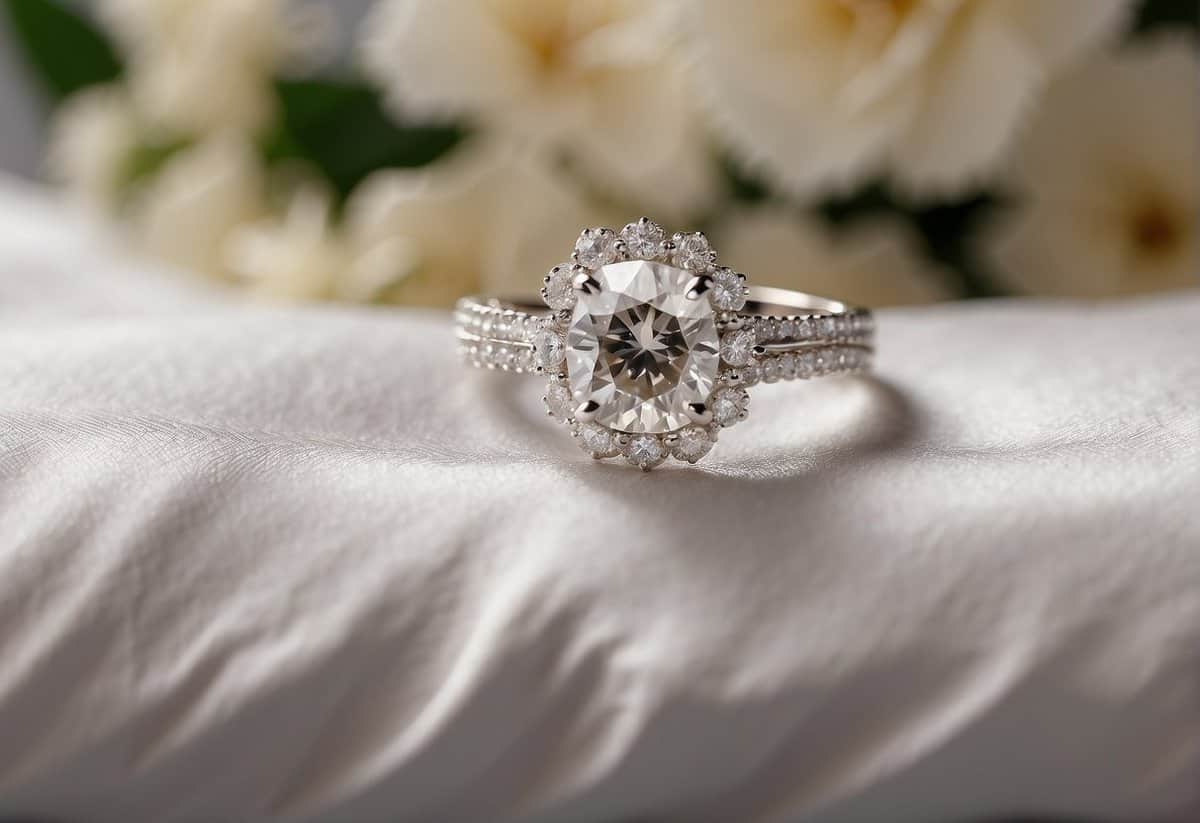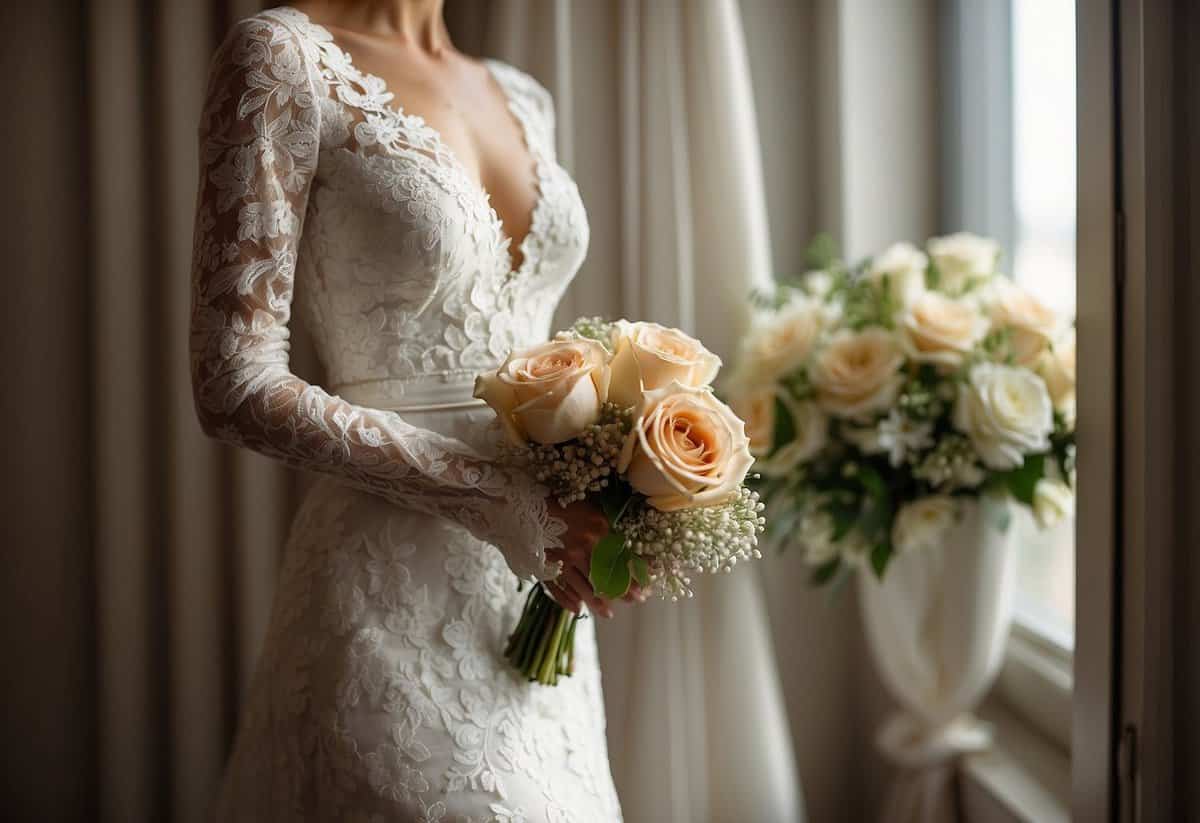Do You Wear Your Engagement Ring When You Walk Down the Aisle? Understanding Wedding Traditions
When preparing for your wedding day, a question may arise about whether to wear your engagement ring as you walk down the aisle. This decision is often influenced by tradition but is ultimately personal and can reflect your style and the significance you place on your rings. Wearing your engagement ring on this significant walk symbolizes the journey of your commitment thus far, and the day itself transforms that promise into a formal union.

There are a variety of practices when it comes to the wedding ceremony and the handling of engagement rings. Some choose to follow the traditional etiquette, which involves switching the engagement ring to the right hand before the ceremony, allowing the wedding band to be placed first on the left hand. Others might wear their engagement ring on their left hand and simply rearrange the rings after the ceremony. Whatever you decide, ensure it complements your comfort and the flow of your ceremony, making the experience seamless and memorable.
Key Takeaways
- Your engagement ring marks a pivotal step in your commitment leading up to the aisle.
- Tradition may guide your choice but personal preference can shape the ceremony practices.
- Adapt ring etiquette to fit your style and the significance of your wedding day experience.
The Significance of Engagement Rings

Engagement rings represent a deep commitment and the promise of a future together. They are a symbol of love and dedication between two people planning to marry.
Symbolism of the Ring
The circle of an engagement ring is a powerful symbol. It represents eternity, with no beginning or end, much like the love and commitment it’s meant to signify. Wearing this ring on your left hand has become a widely accepted tradition, signaling that you are engaged and soon to be married. This symbolic piece of jewelry conveys a message of devotion and readiness to take on life’s journey with your partner.
Historical Traditions
The tradition of wearing an engagement ring on the fourth finger can be traced back to the Ancient Romans. They believed this particular finger housed the “vena amoris” or the vein of love, which ran directly to the heart. Though this was a myth, the sentiment stuck, and many people today still honor this tradition by placing the ring on their right ring finger before the ceremony and switch it back to the left hand after the wedding band is added, which is also worn on the fourth finger as a direct connection to the heart.
Ceremony Etiquette and Practices

When you’re planning your walk down the aisle, understanding the proper ceremony etiquette regarding your rings can ensure a smooth experience. Let’s explore the balance between traditional customs and modern approaches, and how a wedding planner or trusted attendee can assist.
Ring Etiquette During the Ceremony
Traditional Etiquette: Historically, brides have worn their engagement ring on their right hand during the ceremony. This allows your wedding ring to be placed on your left ring finger first, symbolically closer to your heart.
- During the Exchange: Your partner will slide the wedding band onto your left ring finger.
- After the Ceremony: The engagement ring can then be switched back to the left hand, positioned on top of the wedding band.
Modern vs. Traditional Views
The choice of how to wear your engagement ring during the ceremony isn’t strictly governed by rules.
- Modern Perspectives: Many brides now choose to keep the engagement ring on their left hand if it feels more comfortable or meaningful.
- Some choose not to wear their engagement ring during the ceremony for simplicity or to give the wedding band its special moment.
Role of the Wedding Planner
A wedding planner, friend, family member, or the officiant can play a crucial role in the safekeeping of your rings.
- Safekeeping: If you prefer not to wear your engagement ring, your wedding planner can ensure its safeguard until after the ceremony.
- Assistance: They can also help remind you to switch the rings to their desired position post-ceremony, ensuring everything proceeds without a hitch.
Preparing for the Walk Down the Aisle

Your walk down the aisle is a pivotal moment on your wedding day. It’s a culmination of joy, elegance, and the personal style you bring to your ceremony. As you make your preparations, remember that every detail, from the jewelry you choose to the way you hold your bouquet, contributes to this unforgettable passage.
The Bride’s Preparation
On your wedding day, preparing for the walk down the aisle involves thoughtful consideration of your appearance and the traditions you wish to honor. Your wedding band and engagement ring are significant components of your bridal look. It’s traditional for the wedding band, which symbolizes your commitment, to be placed on your left ring finger during the ceremony. To make the exchange easier, ensure that your engagement ring is either on your right hand or safely stored in a ring box until after the ceremony.
Additionally, your bridal attire is not just about the dress; it’s a carefully coordinated ensemble. Consider how your jewelry will complement your gown. Will you be wearing a family heirloom like a necklace, or have you chosen something new that resonates with your personal style? The accessories you select should harmonize with your overall look and feel natural to you as you make your way down the aisle.
Considering Jewelry Options
Choosing the right jewelry for your walk down the aisle can be as much about sentiment as style. Here’s a quick guide to help you consider your options:
- Engagement Ring: Shift it to your right hand pre-ceremony, or leave it in a trusted person’s care.
- Wedding Band: Make it accessible for the ring exchange; a trusted bridesmaid or the ring bearer can hold onto it until the right moment.
- Other Jewelry: Balance is key—less can be more. Select pieces that enhance, not overwhelm, your bridal look.
- Bouquet: This is part of your overall presentation; choose flowers that complement your jewelry’s color and style.
Remember to choose pieces that make you feel beautiful and stay true to your own tastes, as this contributes to the confidence with which you’ll walk down the aisle.
The Wedding Ceremony Experience

The exchange of rings and capturing those precious moments are key aspects that encapsulate the essence of your wedding ceremony experience. These rituals symbolize the commitment you are making and provide lasting memories through photographs.
Exchanging of the Rings
During this pivotal part of the wedding ceremony, you will place the wedding band on your partner’s finger. Traditionally, the wedding band is worn closest to the heart, so if you decide to wear your engagement ring on your wedding day, it’s common to move it to your right hand before the ceremony. As your spouse slides the band onto your finger, you’ll understand why many brides choose to switch hands — it ensures a fluent motion without any fumbling, magnifying the significance of the moment when you say your vows.
Capturing the Moment
Every smile, every tear, and the joyful ambience of your guests are moments that your photographer will aim to capture, solidifying the day in your memory. It’s in these moments that the role of the maid of honor often expands to include safeguarding your engagement ring if you’ve switched it to the other hand. Ensure that your photographer knows to focus not just on the larger scene but also on the small yet profound actions, like the exchange of rings and that first hand-in-hand walk back down the aisle. These wedding photos will be an enduring testament to the love shared and the lifelong journey embarked upon at the altar.
Frequently Asked Questions

In the excitement and tradition of wedding ceremonies, there are specific customs regarding how to wear your engagement ring. These FAQs shed light on common practices and etiquette for that special day.
Is it considered bad luck to have your engagement ring on during your wedding day?
No, it’s not considered bad luck to wear your engagement ring on your wedding day. The ring symbolizes your commitment and is often incorporated into the ceremony.
Should the engagement ring be worn on the left or right hand before the ceremony?
Traditionally, brides wear their engagement ring on the right ring finger before the ceremony. This allows the wedding band to be placed on the left finger without obstruction.
What is the proper way to wear your engagement ring during the marriage ceremony?
During the ceremony, you may wear your engagement ring on the opposite hand, and then move it back after the ring exchange. Alternatively, keep it on your left hand and switch it over with the wedding band afterward.
How do people usually handle their engagement ring after the wedding?
After the wedding, the engagement ring is typically worn on the outside of the wedding band on the left hand, signifying the complete commitment to the marriage.
Are you expected to keep wearing your engagement ring once you are married?
Yes, most people continue to wear them together with the wedding ring, stacked on the fourth finger of their left hand.
What are common practices regarding wearing your engagement ring in bed?
Wearing your engagement ring in bed is a personal choice, but some prefer to remove it to avoid damaging the ring or causing discomfort while sleeping.
